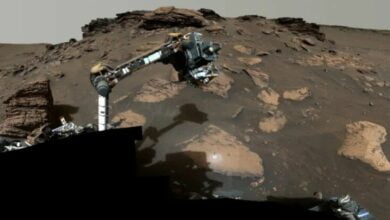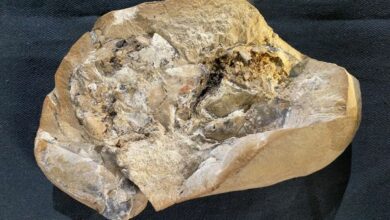
An important find in a cave that changed our understanding of the people of the Stone Age
(ORDO NEWS) — In one of the Indonesian caves, scientists have discovered “unusual” human remains that turn our understanding of the Stone Age, reports CNN. They once again convince us of how knowledgeable our ancestors were.
Many of you probably know that Africa was the cradle of mankind.
However, a series of amazing fossil and DNA finds made across Asia has forced scientists to radically rethink the history of the human race.
It was in Asia that scientists discovered completely new species of extinct people, including our close relatives, who received the nicknames “hobbit” and “dragon man”, as well as a small drawing of three pigs, which, as it turned out, is the oldest work fine arts in the world.
Now get ready to learn about another stunning find in Asia that has shown scientists just how advanced and knowledgeable our ancient ancestors really were.
We are Family
In a remote cave in Borneo, Indonesia, archaeologists have made a discovery that upends our understanding of the Stone Age: they have found an amputee who lived 31,000 years ago.
The young man’s skeleton was missing the lower left leg, which Australian and Indonesian researchers believe was carefully cut off just above the ankle by a remarkably dexterous prehistoric surgeon - probably using stone tools.
Just a hundred years ago, most amputees died either from blood loss and shock, or from an infection that developed later.
However, this prehistoric limb amputation was not only successful. After the operation, the man with the amputated leg lived another six to nine years and died of natural causes, after which the people who cared for him carefully buried him.
Pioneers
Scientists at the University of Cambridge in the United Kingdom have succeeded in creating synthetic mouse embryos in the lab. This exciting achievement could eventually form the basis for the development of new fertility treatments.
Scientists were able to create an embryo, which then developed a heart and brain, from mouse stem cells without using either an egg or sperm.
By observing embryos at this stage of life in the lab rather than in the womb, scientists have gained a deeper understanding of the mysterious process of how life began. Their goal was to find out why pregnancy might not occur and how to prevent fetal loss.
Scientists hope to eventually switch from mouse embryos to creating models of natural human pregnancy.
Fantastic creatures
The oldest mammal known to science, Brasilodon quadrangularis, was a shrew-like creature. He scurried under the feet of the first dinosaurs about 225 million years ago.
Previously, scientists were sure that this small animal was a reptile.
Now the results of a new study have shown that it was definitely a mammal. This discovery was made thanks to the “clues” in three fossilized jawbones that belonged to this long-extinct creature.
This amazing discovery will help paleontologists better understand the evolution of modern mammals.
Defying the laws of attraction
How is NASA’s Artemis I mission now after two failed attempts to launch this lunar mega-rocket?
The space agency has delayed the third attempt until September 23 or 27 - or possibly even longer as engineers try to find a way to fix the hydrogen fuel leak.
The situation is further complicated by the changeable weather in Florida, where the hurricane season is now in full swing, as well as ongoing commitments: On October 3, NASA is due to launch the Crew-5 mission, which will carry a new group of astronauts to the International Space Station aboard a SpaceX rocket.
At the moment, the Artemis I lunar rocket is on the launch pad, where engineers are replacing seals at the interface between the liquid hydrogen supply line and the launcher.
However, this huge rocket may still have to return to the vertical assembly building at the Kennedy Space Center.
The most important mission
The Thwaites Glacier, sometimes referred to as the “Doomsday Glacier” in western Antarctica, has been worrying scientists for decades, fearing its possible retreat could trigger a sea level rise.
Geophysicists have mapped the movement and retreat of the glacier, which is now about the size of Florida, in the hope of learning from the past what will happen to it in the future.
The research team found that at some point in the past two centuries, the base of the glacier moved away from the sea floor and began to recede at twice the rate that scientists have observed over the past decade.
The findings suggest that this glacier is able to move quickly once it detaches from the seafloor ridge, which helps keep it under control. Simply put, the glacier hangs on its “fingertips,” as one marine geophysicist involved in the study put it.
—
Online:
Contact us: [email protected]
Our Standards, Terms of Use: Standard Terms And Conditions.









